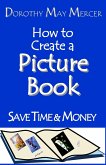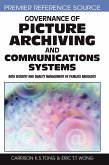Learn from a seasoned Hollywood film composer the intricacies of synchronizing music to picture in Logic Pro 10.6 and later versions, and apply these lessons to elevate your own projects in this part-color guide Key Features: Learn essential film music terminologies and practices used in Hollywood with this illustrated guide Explore crucial synchronization techniques using a hands-on example of writing music to picture Prepare yourself for a real gig as a film, TV, and multimedia composer Purchase of the print or Kindle book includes a free PDF eBook Book Description: This book will help you leverage the Logic Pro digital audio workstation (DAW) for scoring to picture. With the help of expert insights from a Hollywood film composer, you'll understand how the film music industry works and be ready to meet the demands of film directors or producers, exploring common scenarios and the process of post-production and final film score delivery. Packed with all the technical and practical skills needed when scoring to picture in Logic Pro, along with insights into real film scoring tasks, this book will prepare you for success in the industry. You'll start by getting acquainted with film scoring terminology and then advance to working with QuickTime video and its components, getting an overview of how to set up and sync a movie file in Logic Pro. You'll see the different methods of creating tempo maps, find a suitable tempo for a film scene using hit points and scene markers, and work with time signature and beat mapping functions. You'll also work with a pre-composed score of a Mercedes commercial that you can analyze and emulate in your own Logic Pro session. By the end of this book, you'll have gained new skills and the knowledge of commonly used industry scenarios to help you enter the professional market of scoring to picture. What You Will Learn: Master film and multimedia tasks as a film composer Use QuickTime video in Logic Pro Create tempo maps and calculate the best tempos for film cues Understand advanced concepts to deal with timing in film music Acquire essential skills to thrive in the competitive film music industry Gain the knowledge necessary to communicate confidently with film industry professionals Develop the technical skills of scoring to picture Who this book is for: This book is for aspiring multimedia composers and musicians as well as advanced film, TV, and game music composers. Music supervisors, editors, and orchestrators will also find this book useful. Basic knowledge of Logic Pro, music theory, composition, and film scoring is expected.
Hinweis: Dieser Artikel kann nur an eine deutsche Lieferadresse ausgeliefert werden.
Hinweis: Dieser Artikel kann nur an eine deutsche Lieferadresse ausgeliefert werden.








